Project Protector was formed to acquire a Multi-Role Vessel (MRV), and Offshore and Inshore Patrol Vessels (OPVs and IPVs). The primary role of the MRV is to provide the New Zealand Defence Force (NZDF) with a tactical sealift capability. In addition to this role, the MRV is able to provide a response capability to contingency operations in the New Zealand EEZ and the South Pacific, conduct sea training for the Royal New Zealand Navy (RNZN) and contribute to the off shore patrol effort.
The OPVs and IPVs are to be operated by the Royal New Zealand Navy to conduct tasks for and with the NZDF, New Zealand Customs, the Department of Conservation, Ministry of Agriculture and Forestry, Ministry of Foreign Affairs and Trade, Ministry of Fisheries, Maritime New Zealand and the New Zealand Police.
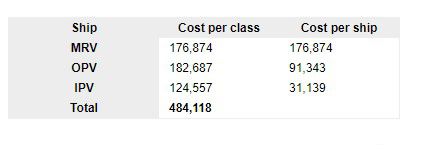 In 2004, the Government approved a project budget of NZ$500 million excluding GST. The following are the estimated costs (NZ$K) at this current stage of the project for each ship and class. The project is yet to be closed so final costs per vessel and class have yet to be finalised. The costs provided below is an interim assessment of the vessel costs to date with costs for project management, spares, contingency and Government Furnished Equipment apportioned across the three ship classes:
In 2004, the Government approved a project budget of NZ$500 million excluding GST. The following are the estimated costs (NZ$K) at this current stage of the project for each ship and class. The project is yet to be closed so final costs per vessel and class have yet to be finalised. The costs provided below is an interim assessment of the vessel costs to date with costs for project management, spares, contingency and Government Furnished Equipment apportioned across the three ship classes:
The contract was signed on 28 July 2004, with Tenix Defence Pty Limited (now BAE Systems Australia) for the provision of seven ships, comprising one MRV, two OPVs, and four IPVs. The MRV was built in the Netherlands, the two OPVs in Melbourne and the four IPVs in Whangarei. The New Zealand industry content achieved was $135.4 million which exceeded the contracted requirement of $110 million by 23%. 85 major New Zealand companies and approximately 400 others were involved in the provision of work or equipment for Project Protector. Three New Zealand companies were awarded over $10 million of work and about 10 with contracts over $1 million. The Multi Role Vessel was named HMNZS Canterbury at her launch in Rotterdam on 11 February 2006 . The two OPVs were named HMNZS Otago and HMNZS Wellington at their launch on 18 November 2006 and 27 October 2007 respectively. The four IPVs were named HMNZS Rotoiti (on 4 August 2007) HMNZS Hawea (15 December 2007), HMNZS Pukaki (10 May 2008), and HMNZS Taupo (23 August 2008) at ceremonies in Whangarei shortly after their launch.
HMNZS Canterbury was delivered on 31 May 2007 and commissioned into RNZN service on 12 June 2007 in Melbourne. She has since completed her RNZN introduction to service programme and has undertaken a range of exercises
HMNZS Otagoaround New Zealand, the Pacific, South East Asia and Australia as well as operations in Timor Leste, Indonesia, and supported the tsunami relief efforts in Samoa demonstrating the significant and intended capability of this ship. All four IPVs have been delivered and have been successfully introduced into RNZN service and are now undertaking their designed role of multi-agency tasks around New Zealand. Both OPV's have also been delivered. HMNZ Ships Otago and Wellington completed their RNZN operational and system qualification testing in September 2010.
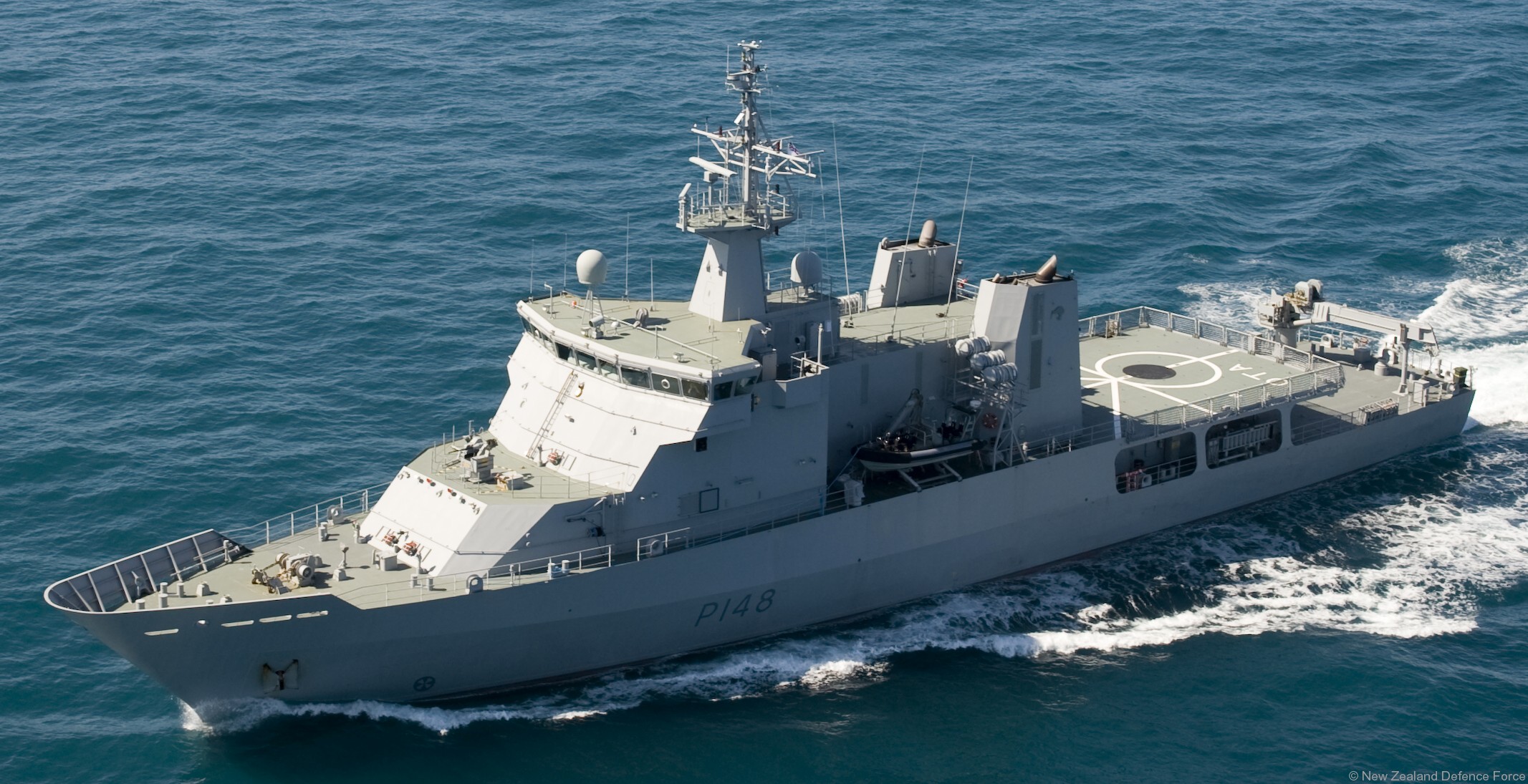 HMNZS Otago
HMNZS Otago
In the ten years between 2012 and 2022, the Royal New Zealand Navy will have decommissioned three vessels, and will have introduced the new fleet tanker HMNZS Aotearoa, the dive and hydrographic vessel HMNZS Manawanui, and the refurbished Anzac class frigates. Each of these new capabilities will be world class, providing a strong foundation for the Navy out to 2030. Focus for maritime investments will move to the patrol and sealift forces, with each vessel requiring replacement within the timeframe of the 2019 Capability Plan. These ships have made significant contributions domestically and in the South Pacific. Moving to more specialised vessels, including enhanced sealift and an ice-strengthened patrol vessel, will provide the Defence Force with the capability needed to meet future challenges.
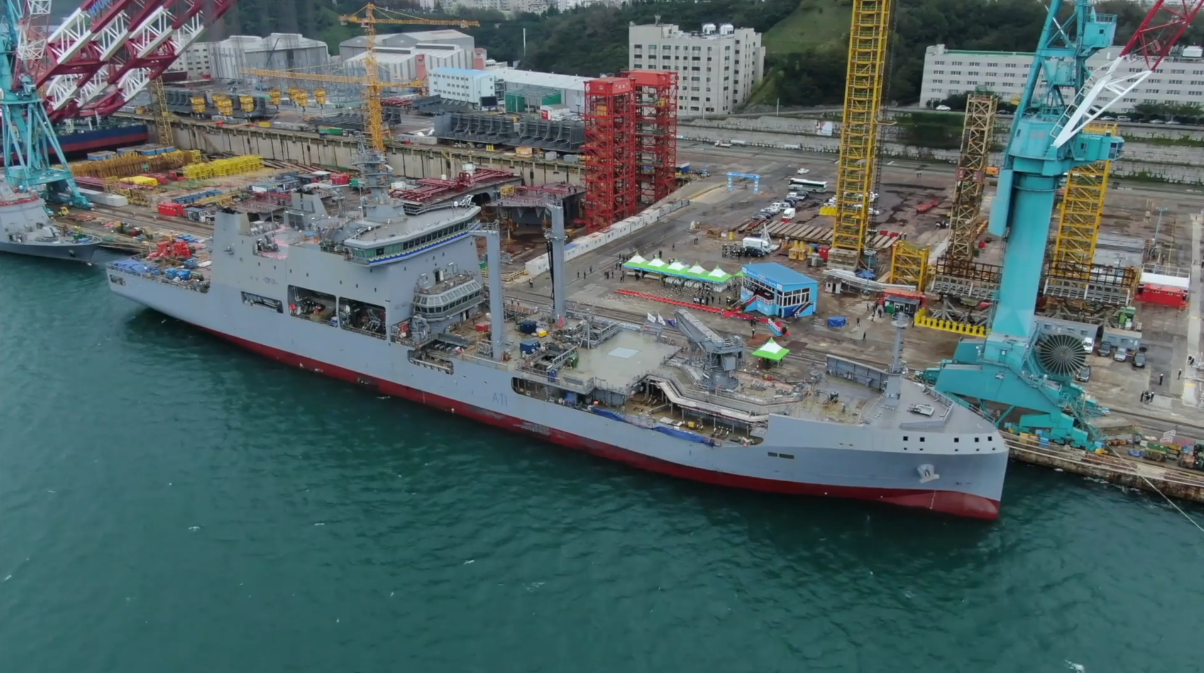
HMNZS Aotearoa
Minister of Defence Ron Mark on 11 June 2019 released the Defence Capability Plan 2019. The Defence Capability Plan includes an Enhanced Sealift Vessel to complement HMNZS Canterbury, with an additional vessel scheduled to replace Canterbury in the mid-2030s, maintaining a two vessel sealift fleet. Replacements are also planned for the Maritime Helicopter and Offshore Patrol Vessel fleets. Planned investment is also retained for a dedicated Southern Ocean Patrol Vessel, alongside the major procurement already underway for the P-8A Poseidon aircraft, HMNZS Aotearoa and HMNZS Manawanui.
The capability will provide a highly flexible military asset, including hospital facilities, planning spaces, and self-defence capabilities.
The 2019 Plan also shifted the replacement of the ANZAC frigates into the post-2030 period. Governments have invested $970 million in upgrading the frigates since 2007. When their final refits are complete they will be technologically advanced and fit for purpose for the modern environment. The major upgrades currently being undertaken on the ANZAC frigates combat systems will not be fully completed until 2023. In order to maximise the value of these upgrades, the service lives of the ANZAC frigates will be extended until after 2030. To support this life extension additional work will be completed on the vessels, including an enhanced maintenance and repair package to ensure appropriate upkeep until the end of the ships’ service lives. Delaying the replacement of the frigates improves the affordability of the Defence Capability Plan 2019 by de-conflicting the replacement of the most significant Defence capabilities.
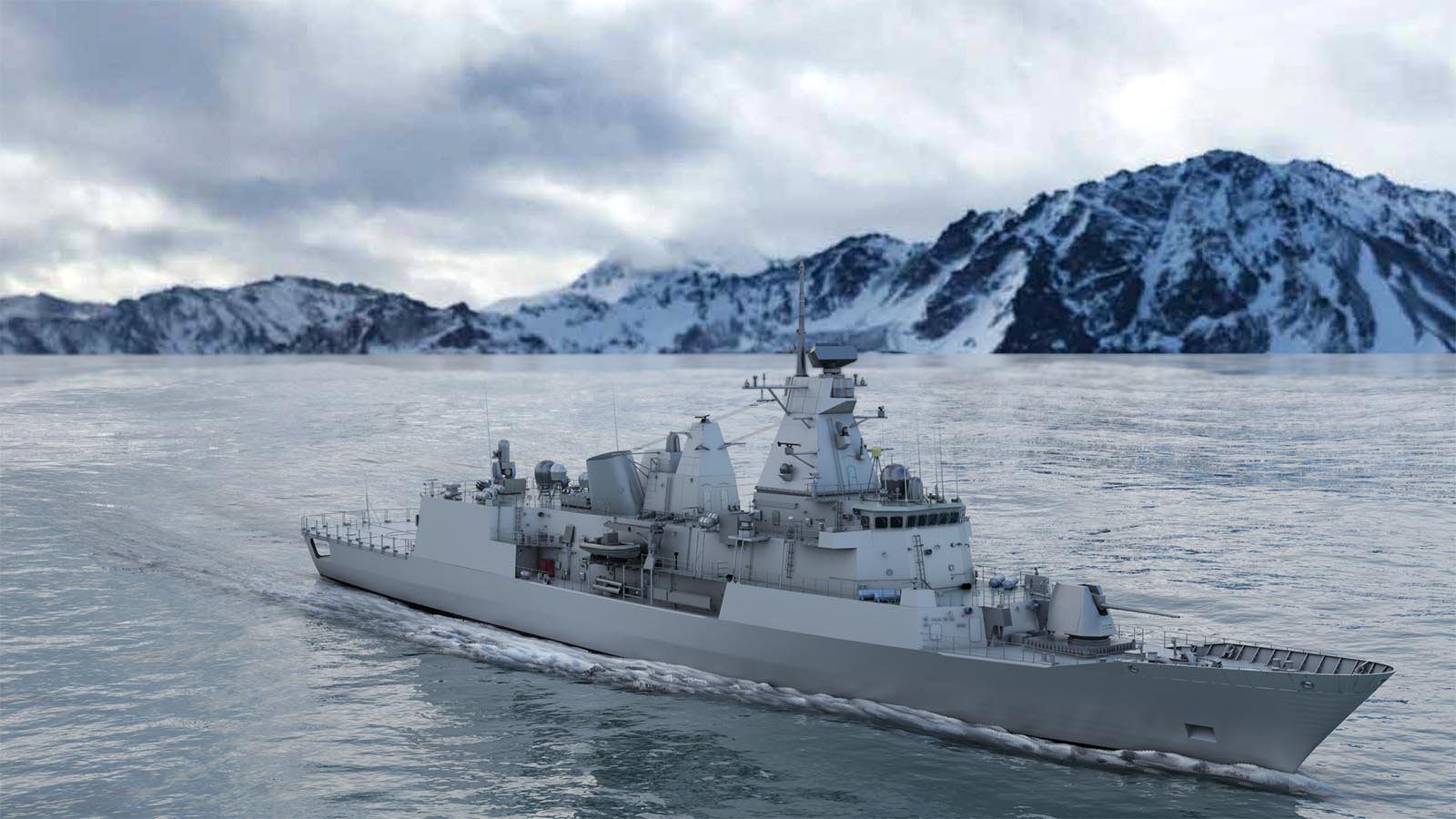 An artist impression of an upgraded ANZAC Frigate
An artist impression of an upgraded ANZAC Frigate
The Anzac Frigates are scheduled to be replaced with modern surface combatants relevant to New Zealand’s prevailing strategic environment in the mid-2030s. Introduction of the new ships will be phased with the withdrawal from service of the existing Anzac frigates.
Recognising the high value of sealift to humanitarian and disaster relief, and the sustainment of deployed forces, in the mid-2020s an additional sealift vessel will be acquired. Operating alongside HMNZS Canterbury, this acquisition will provide two sealift vessels, and will greatly improve the effectiveness of the Defence Force, and the resilience of the nation, and the region.
The enhanced sealift vessel will have greater lift capacity than HMNZS Canterbury. The capability will provide a highly flexible military asset, including hospital facilities, planning spaces, and self-defence capabilities. It will also provide support for the deployment of a range of capabilities, including Special Forces, Unmanned Aerial Vehicles and NH90 helicopters. The enhanced sealift capability will also improve the New Zealand Defence Force’s amphibious operations. Through the provision of a well dock, it will be able to conduct operations in a wider range of sea conditions, and will have the size and capacity to carry large equipment, and sufficient aviation capacity to allow extended, long duration operations. Its size will also provide for the transport of a larger number of personnel, allowing for the value of the increased size of the New Zealand Army to be realised.

HMNZS Canterbury and one of her LCM's
Collectively, these enhancements will significantly increase the ability to respond to humanitarian and security events in the Pacific region. While a future project will determine detailed requirements for this capability, a Landing Platform Dock is an example of the type of vessel that will be considered.
- Options for the NZDF and RNZN 2nd enhanced Sealift vessel
- Why do I think the Endurance 170 LHD is a good choice for the RNZN.
- Ship to Shore : Amphibious Support Ships in The The Asia-Pacific Region
Following 2030, HMNZS Canterbury will be withdrawn from service. At this time an investment will be made to further improve the Defence Force’s sealift capability with an additional vessel. Options will be explored against the composition of the fleet, the wider Defence Force and the prevailing strategic environment.
An opportunity exists for New Zealand to better support the sustainability of marine resources in the Southern Ocean and in New Zealand’s Exclusive Economic Zone. Monitoring and mitigating the effects of climate change will also require continued support to New Zealand’s civilian presence in Antarctica and the Southern Ocean.
Towards these ends, this Defence Capability Plan 2019 includes the delivery of a dedicated Southern Ocean Patrol Vessel. The capabilities of this vessel will be primarily for use towards supporting other agencies in the Southern Ocean and around New Zealand. Built to commercial specifications, the vessel will have minimal specialist military capabilities. This vessel will be used by Defence alongside other Government agencies in the Southern Ocean and the waters of New Zealand, allowing the Otago Class offshore patrol vessels, and their eventual replacements, to focus on the South Pacific. While the operation of this vessel will be Defence-led, it will be able to support non-Defence functions including the gathering of scientific data.
The vessels offer patrol capabilities in New Zealand and the South Pacific.
Operational experience has confirmed that specific tasks required of the naval patrol force are better conducted by offshore patrol vessels than inshore patrol vessels, particularly in the South Pacific, due to their longer range, endurance and embarked aviation capability. Two inshore patrol vessels will be withdrawn from service and disposed of immediately, leaving two vessels to meet the demands of domestic patrols within the exclusive economic zone. Prior to the Southern Ocean Patrol Vessel coming into service, which will give greater capacity to the offshore patrol fleet, the future of the remaining two inshore patrol vessels will be reassessed.
The Otago Class Offshore Patrol Vessels, HMNZS Otago and HMNZS Wellington, are expected to reach the end of their service lives in the early 2030s. The vessels offer patrol capabilities in New Zealand and the South Pacific. The replacement vessels will maintain the Royal New Zealand Navy’s existing offshore patrol capabilities.
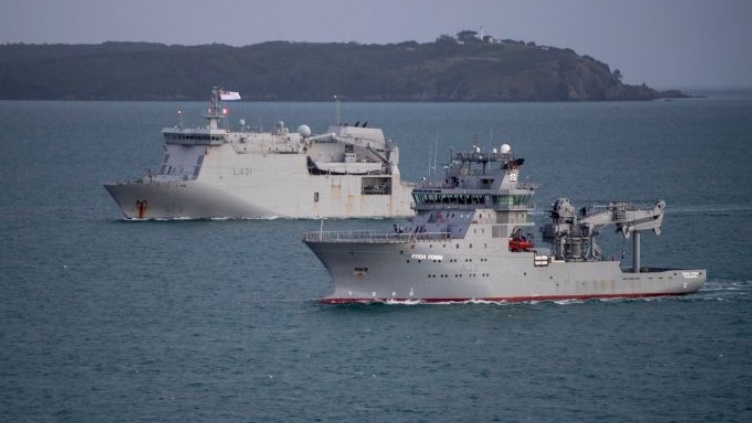
HMNZS Manawanui and HMNZS Canterbury
HMNZS Manawanui will enter service in 2020, providing a substantial uplift in littoral capability. Once in service, HMNZS Manawanui will support underwater search and recovery, hydrographic survey, explosive ordnance disposal, mine counter-measures capability, training and maritime presence, rapid environmental assessment and route survey. Purchased second hand, HMNZS Manawanui has an expected service life of 15 years. The vessel will be replaced with a similar vessel in the mid-2030s, in order to retain the Royal New Zealand Navy’s dive and hydrographic capabilities.





